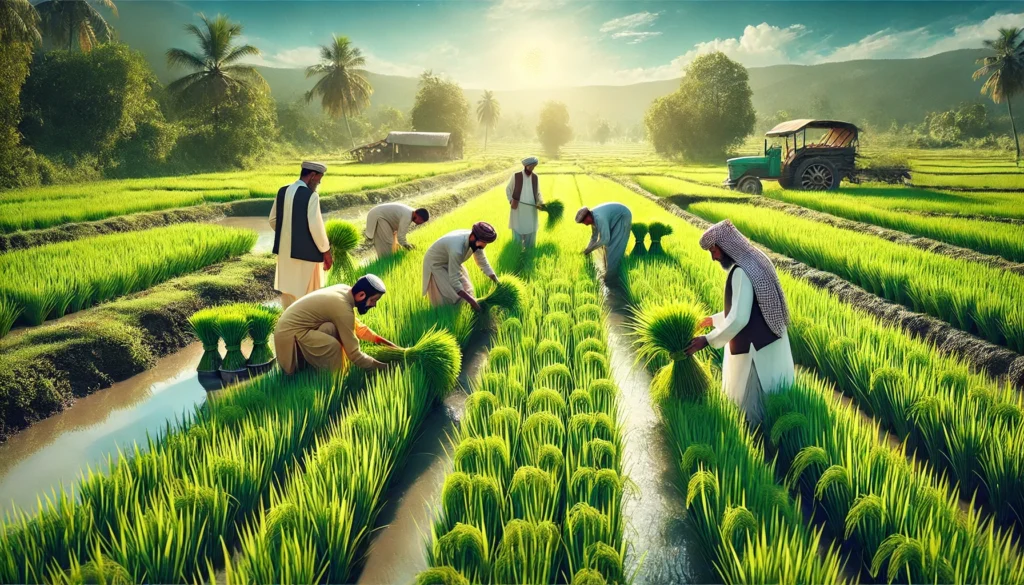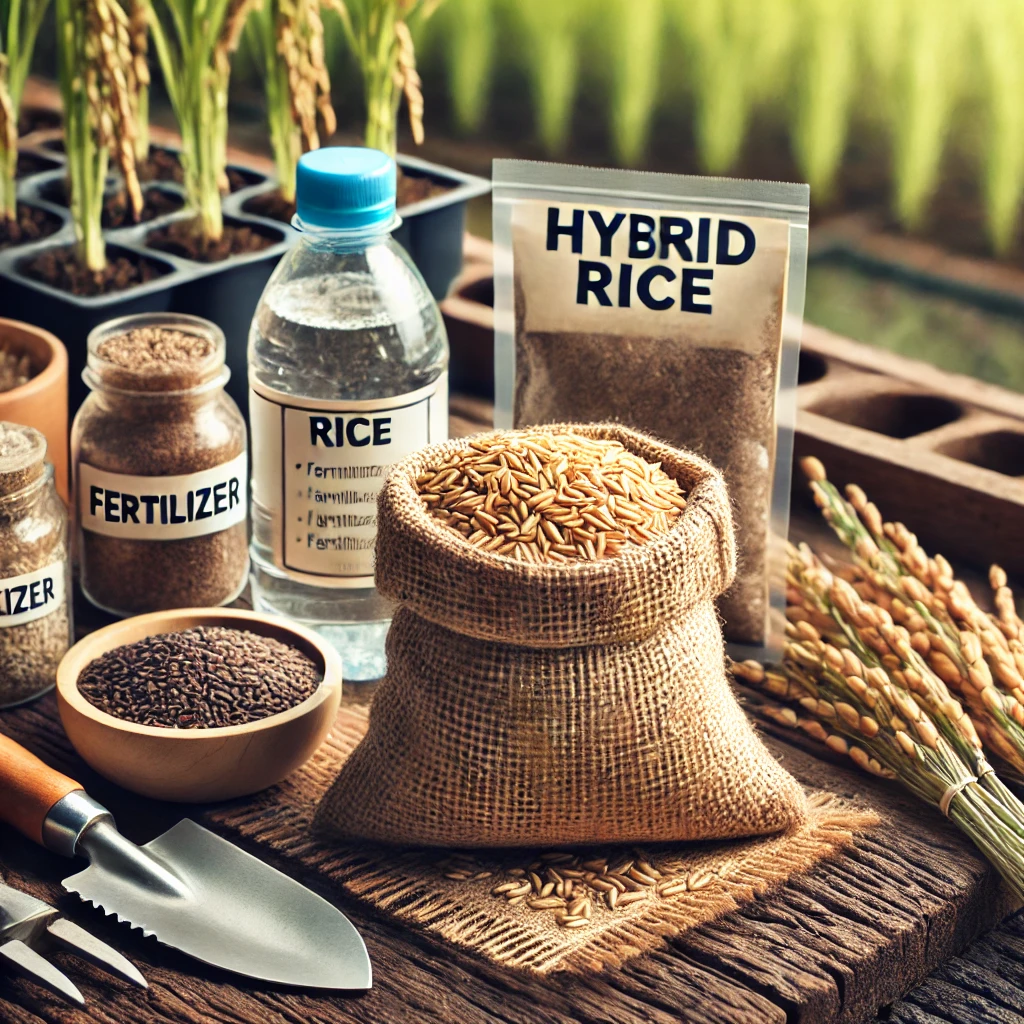Summary
Hybrid Rice Varieties in Pakistan are transforming the agriculture sector by boosting yields and ensuring food security.
This article explores their benefits, cultivation techniques, challenges, and the potential impact on farming communities.
Discover how these innovations are shaping the future of sustainable rice production.

Table of Contents
| Section | Details |
|---|---|
| Introduction | Overview of hybrid rice varieties in Pakistan |
| What Are Hybrid Rice Varieties? | Definition and how they differ from traditional varieties |
| Importance for Pakistan | Why hybrid rice is vital for Pakistan’s agriculture |
| Benefits of Hybrid Rice Varieties | Higher yield, disease resistance, and adaptability |
| Major Hybrid Varieties in Pakistan | Top-performing hybrid rice types in the country |
| Cultivation Techniques | Step-by-step guide to growing hybrid rice |
| Challenges in Adoption | Barriers faced by farmers and possible solutions |
| Impact on Food Security | How hybrid rice is addressing food security challenges |
| Government and Private Sector Role | Initiatives promoting hybrid rice adoption |
| Future of Hybrid Rice in Pakistan | Trends and innovations shaping the future of rice farming |
| FAQs | Frequently asked questions about hybrid rice |
| Conclusion | Final thoughts on hybrid rice varieties and farming innovations |
Article
Introduction
Hybrid Rice Varieties in Pakistan are a game-changer in the agricultural landscape, promising higher productivity and better quality.
With agriculture being the backbone of Pakistan’s economy, innovations like hybrid rice are crucial for meeting the growing food demand and addressing challenges such as water scarcity and climate change.
What Are Hybrid Rice Varieties?
Hybrid rice is developed by crossing two genetically diverse rice plants to produce seeds with higher vigor, yield, and resistance.
Unlike traditional varieties, hybrid rice plants grow faster and adapt better to varying climatic conditions, making them ideal for Pakistan’s diverse agricultural zones.
Importance for Pakistan
Rice is the second-largest staple crop in Pakistan, contributing significantly to the country’s exports and food supply.
However, traditional rice varieties have limited yields and are susceptible to pests and diseases.
Hybrid rice offers a sustainable solution, ensuring higher production and better economic returns for farmers.
Benefits of Hybrid Rice Varieties
- Higher Yields: Hybrid rice can produce 15-20% more yield than traditional varieties, directly benefiting farmers.
- Disease Resistance: These varieties are engineered to withstand common pests and diseases, reducing the need for chemical pesticides.
- Adaptability: Hybrid rice can thrive in different soil types and climatic conditions, making it versatile for various regions in Pakistan.
- Economic Gains: Increased production means better profitability for farmers and more competitive exports for Pakistan.
Major Hybrid Varieties in Pakistan
Some of the leading hybrid rice varieties in Pakistan include:
Basmati Hybrid: Known for its aroma and long grains.
IRRI Hybrid Varieties: High-yielding and widely grown in Sindh and Punjab.
Super Hybrid Varieties: Designed for resilience and optimal performance in harsh conditions.
Cultivation Techniques
To successfully grow hybrid rice, follow these steps:
Seed Selection: Choose high-quality certified hybrid seeds.
Land Preparation: Plow the field thoroughly and ensure proper leveling.
Planting: Use transplanting methods for better growth.
Irrigation: Maintain consistent water levels, especially during critical growth stages.
Fertilization: Apply balanced fertilizers to ensure nutrient availability.
Pest Management: Monitor regularly and use integrated pest management (IPM) techniques.
Challenges in Adoption
While hybrid rice has numerous advantages, farmers in Pakistan face challenges such as:
High Seed Costs: Hybrid seeds are expensive compared to traditional seeds.
Lack of Awareness: Many farmers lack knowledge about hybrid rice benefits and cultivation methods.
Limited Access to Resources: Insufficient access to modern farming tools and fertilizers hampers adoption.
Impact on Food Security
Hybrid rice plays a pivotal role in ensuring food security by boosting production and stabilizing supply chains.
Its high productivity helps meet the demands of a growing population, reducing reliance on imports.
Government and Private Sector Role
Both sectors are actively promoting hybrid rice through subsidies, training programs, and research initiatives.
Companies like Guard Rice and Engro Fertilizers are introducing innovative solutions to make hybrid rice accessible.
Future of Hybrid Rice in Pakistan
The future looks promising, with advancements in biotechnology and climate-smart farming.
Continued investment in hybrid rice research and farmer education will pave the way for sustainable agriculture in Pakistan.

FAQs
1. What are hybrid rice varieties?
Hybrid rice varieties are developed by crossbreeding two different rice plants to produce seeds with higher yields, better quality, and disease resistance.
2. Why are hybrid rice varieties important for Pakistan?
They are crucial for boosting agricultural productivity, ensuring food security, and improving farmers’ livelihoods in Pakistan.
3. Are hybrid rice varieties expensive?
While hybrid seeds are initially more expensive, their higher yields and reduced input costs make them more profitable in the long run.
4. What are the challenges of growing hybrid rice?
Challenges include high seed costs, lack of awareness, and limited access to modern farming resources.
5. How do hybrid rice varieties improve food security?
By increasing production and ensuring a stable food supply, hybrid rice varieties help meet the demands of a growing population.
6. What role does the government play in promoting hybrid rice?
The government supports hybrid rice adoption through subsidies, awareness campaigns, and research investments.


Pingback: Rice Paper in Pakistan: Uses and Local Production - Hazir